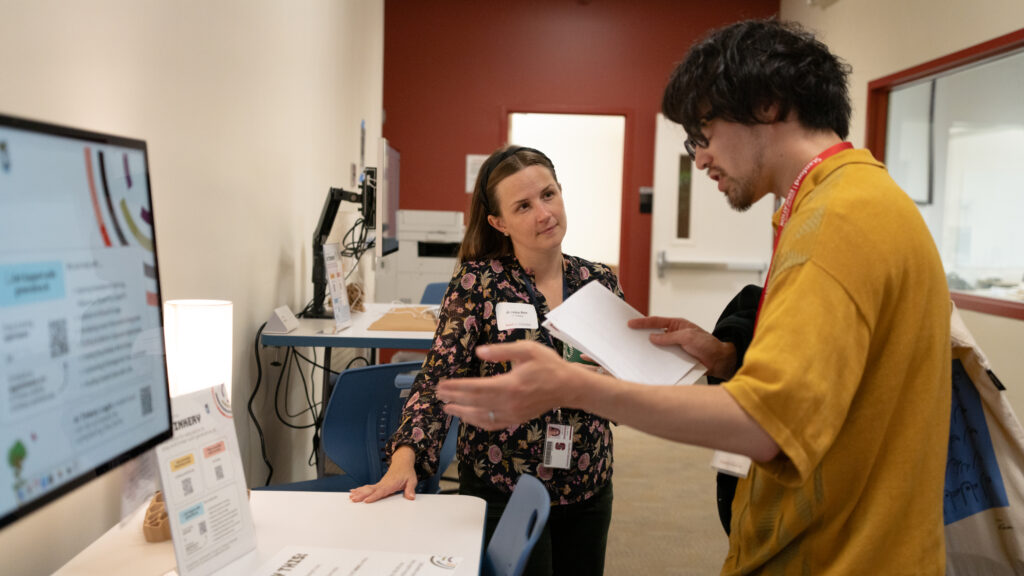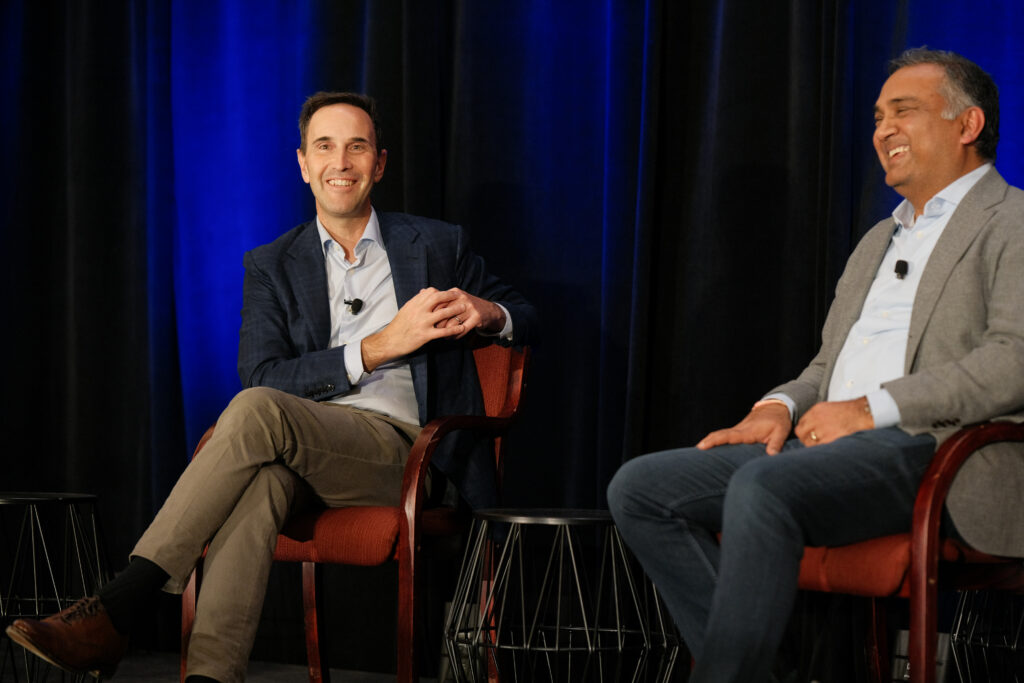Brandi Cannon, a former middle school science teacher and current doctoral student at Stanford Graduate School of Education (GSE), is the teaching assistant for the Stanford Teacher Education Program’s science education class. Cannon and Stanford Accelerator for Learning faculty affiliate Bryan Brown, the professor for the class, know that in today’s day and age, it is fundamental for them to bring artificial intelligence into the curriculum. But Cannon was cautious about introducing AI tools for teaching and learning without an on-ramp for the teacher candidates to understand how AI works and how to use it safely and thoughtfully. Cannon decided to visit the new AI Tinkery.
The AI Tinkery, which launched this fall at the Stanford Accelerator for Learning, helps educators explore how AI can support their teaching practice. Over a series of one-on-one meetings, Jessica Ann, the AI Tinkery manager, shared resources Cannon could draw upon, several developed by Classroom-Ready Resources About AI For Teaching (CRAFT) and the Center to Support Excellence in Teaching (CSET). They decided to have the students use cards to develop their own definitions of AI, do a hands-on activity with examples of AI use cases in the classroom, and create a graphic organizer to develop their personal stances on AI. Cannon left the Tinkery with a ready-to-go 30-minute lesson plan to introduce AI to the teacher candidates.

So, what is a “Tinkery” anyway?
AI is one of the biggest question marks of the past two years for educators, school administrators, and district leaders. A recent report found that 92% of teachers and education leadership saw demand for guidance on the use of AI in the classroom, and it was the second highest edtech priority, after cybersecurity, for state education decision makers. AI for teaching and learning, particularly with young people, is such a pressing topic that the U.S. Department of Education created a report of insights and recommendations less than a year after the release of ChatGPT. The technology dominated the conversations at this year’s ASU+GSV conference, despite the addition of a two-day pre-show AI educator gathering.
Enter the AI Tinkery. Inspired by the concept of a makerspace, a physical space that supports exploration, play, experimentation, and iterating toward a solution to a problem, the Tinkery provides a so-called “phygital” (physical and digital) experience that empowers educators to explore what they want and need to know about AI.
Karin Forssell, founder and director of the GSE Makery, is also the founder and director of the new AI Tinkery. “Both spaces are hands-on, but the AI Tinkery is hands on the keyboard,” she explained.

Located in a colorful corner of the first floor of the Center for Educational Research at Stanford (CERAS) and online, the AI Tinkery offers access to AI tools, research, and use cases in classrooms; guidance for effective and ethical use; and opportunities to build community and share ideas with other educators. Above all, it’s an informal learning space meant to spark the imagination and enable experimentation. “You’re not just coming to the space to learn about AI, you’re coming to the space to tinker with AI,” said Ann.
The AI Tinkery welcomes educators of all kinds: K-12 classroom teachers, university instructors, teaching assistants, education researchers, and students building new AI learning tools. “The goal is to create a collaborative space where the community learns from and shares with each other,” said Ann.
Ann and Forssell collate resources from across and outside Stanford to serve AI Tinkery visitors, including a wealth of emerging research on AI and learning across disciplines; lesson plans and pedagogical guidance from CRAFT, CSET, the Stanford Center for Teaching and Learning, and Stanford Institute for Human-Centered Artificial Intelligence (HAI); and technology access through the Stanford IT AI Playground. “We aim to amplify these resources and connect people to them,” said Ann.
Ann and the AI Tinkery mentors, Stanford students hired to staff the space, serve as librarians helping visitors navigate this plethora of information. They work with educators to figure out what tool might be useful in a given classroom scenario and suggest existing activities or lesson plans that might work. If nothing immediately comes to mind, they know where to look and who to ask.
Initial AI Tinkery programming includes open hours, access to explore tools that normally have a paywall, workshops led by experts from around campus, and one-on-one support sessions. The team has also visited Stanford classrooms to lead one-off lessons. Upcoming, the AI Tinkery will host “Tinker Time,” a hands-on monthly session to experiment with a specific AI tool; industry product demos; and faculty-led virtual educator exchanges.
Shaping the future of AI for learning
As AI technology evolves, so too will how teachers use it. “At the AI Tinkery, we foster rich conversations about what’s possible using these new technologies,” said Forssell. “We engage a wide range of learners and help them all to get closer to answering their own questions.”

“This is not an AI hype zone,” said Ann. “It’s a space to talk with other educators and ask hard questions about the implications of this technology, and figure out how it will work for your classroom.”
Forssell stressed that the AI Tinkery is designed to be flexible and adaptable to the iterative nature of teaching and emerging technology, respectively. Forssell’s background is in designing effective learning experiences using technology and Ann’s is in formal classroom teaching and informal learning in museums. Together, they plan to gather continuous feedback and develop fresh programming on an ongoing basis, grounded in the most pressing questions educators have about AI.
“It’s not about having the answers,” said Forssell. “Together, we’ll explore, brainstorm, debate, and discuss what we should and should not do with AI.” In this way, the project will contribute to the collective understanding of AI for teaching and learning. “We will be contributing real-world examples of AI implementation in classrooms, using research-based pedagogical practices,” said Ann. “Come hang out – ideas will spark.”



